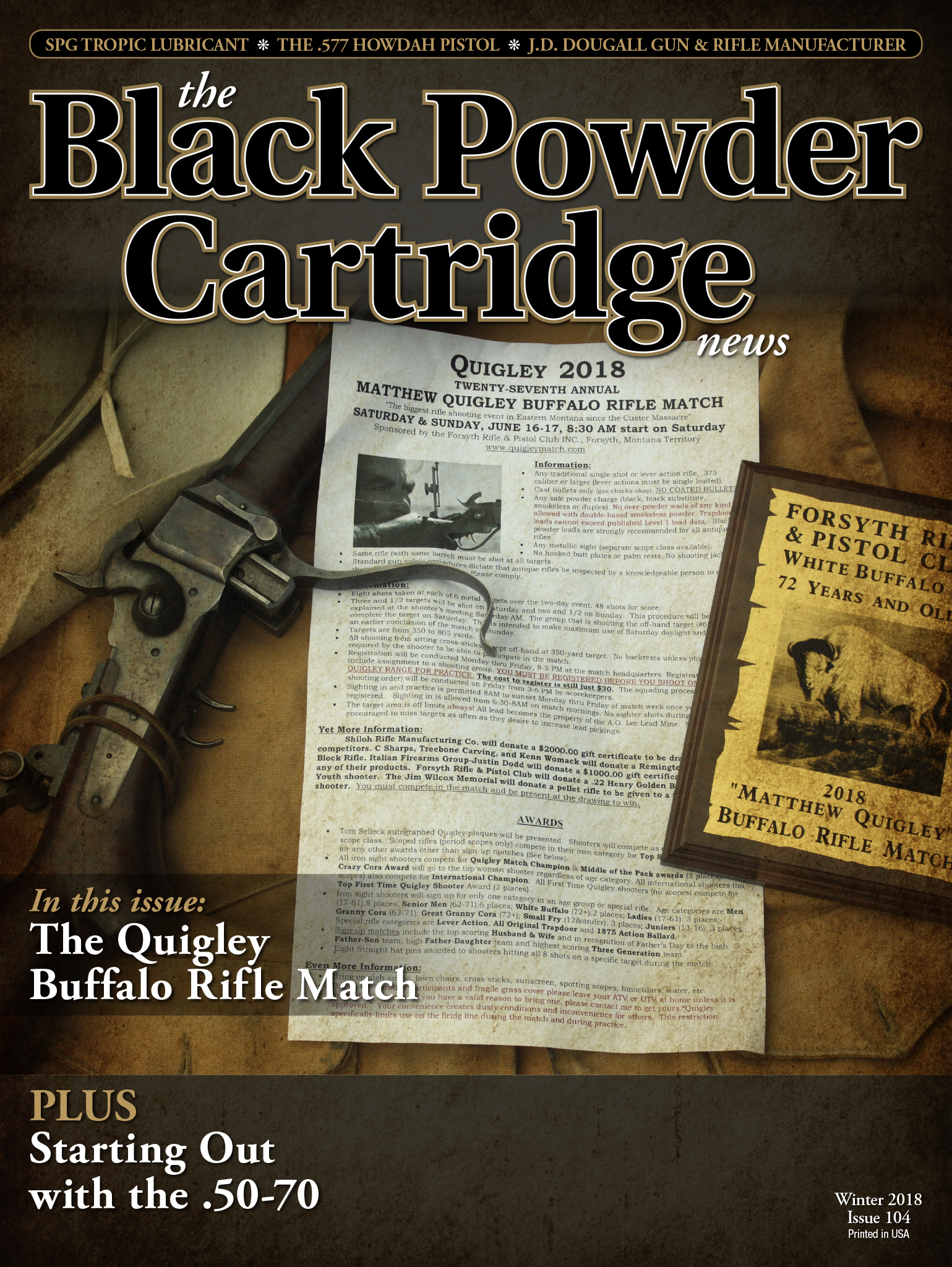Starting Out with the .50-70
feature By: Mike Nesbitt | December, 18
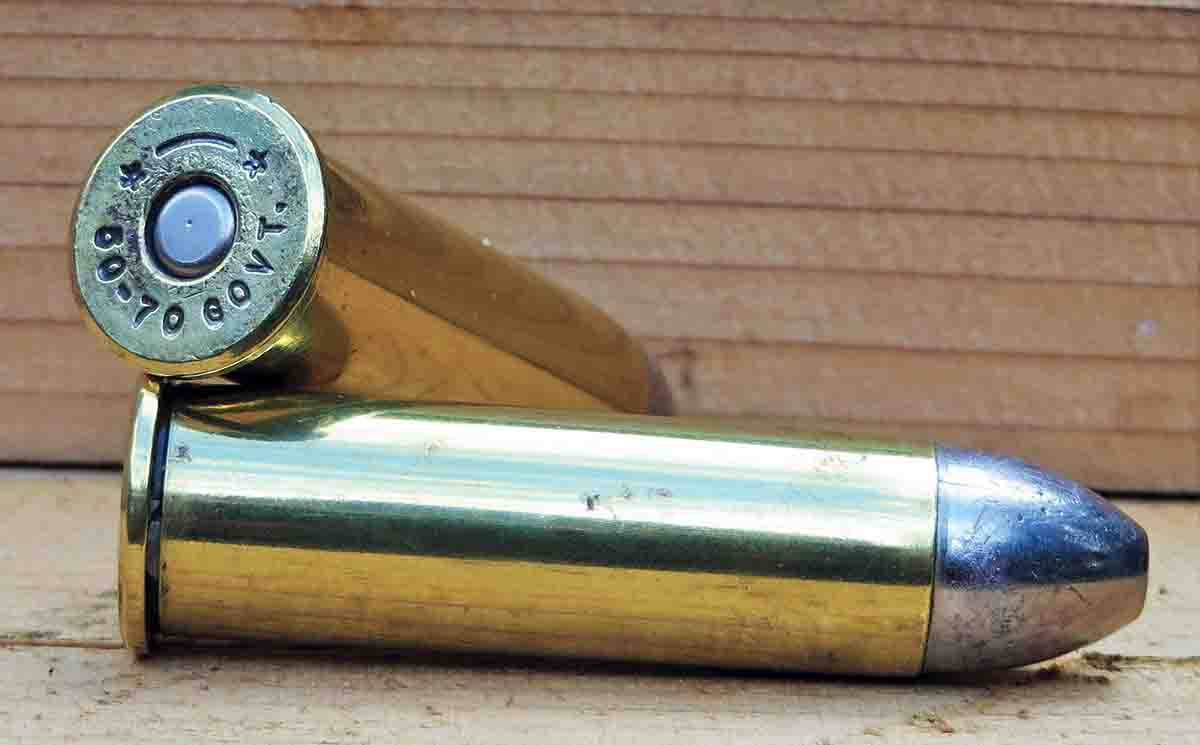
We call it a very good black powder cartridge to start with because of a short list of needs for getting outfitted and having characteristics that are all on the positive side. First, brass is readily available, primarily by Starline as well as some other sources. Starline brass is very good and will last a long time, especially with black powder loads. Bullets or bullet moulds are also rather easy to get. The most commonly used bullet style is the copy of the old Government bullet, a 450-grain grease-grooved job that should be sized
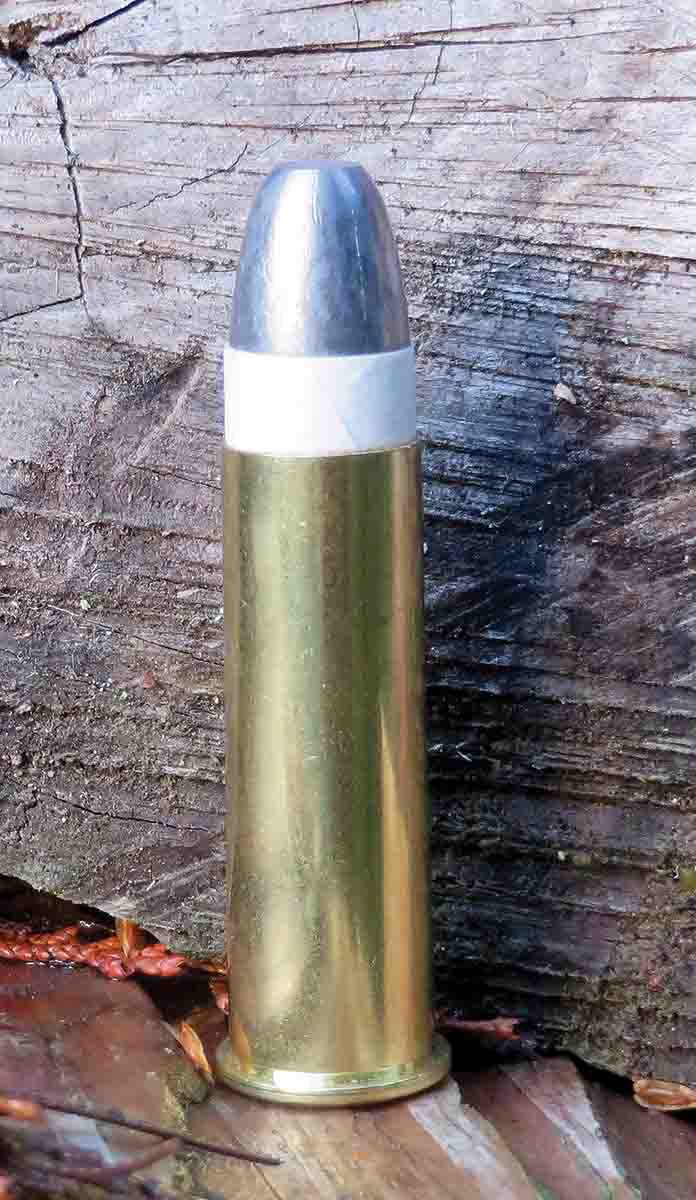
Also, let me mention that most of the components can be found at Buffalo Arms Company. I get a lot of my own supplies from Buffalo Arms (buffaloarms.com) and my recommendation for them is made with no hesitation. Wander through the company’s online catalog if you are in need of black powder cartridge supplies.
While new .50-70 caliber rifles might not be encountered every day, there are some very good ones currently available. The most recognizable are the Sharps replicas and I’ll mention those made in other countries plus the American-made rifles by Shiloh Sharps and C. Sharps Arms, both out of Big Timber, Montana. Another way to get a good .50-70 rifle is to rebuild one of the old military rolling blocks by Remington, or simply buy a vintage .50-70. Getting a new rifle, however, gives you the advantage of having a new barrel. Remington Rolling Blocks were favored by many old-time shooters, as well as the Springfield Trapdoor military rifles.
Many of the old barrels were rifled with a 1:42 rifling twist, and that is on the slow side. Most new barrels for .50-70s use a rate of twist at one turn in 26 inches. The 1:26 twist does quite well, and I have a custom barrel made by Oregon Barrel Company with a 1:32 rifling twist, which is working very nicely.
While I include this information just to cover all of the bases, most of us have had no trouble with shooting our .50-70s with 450-grain bullets out to 200 yards and farther.



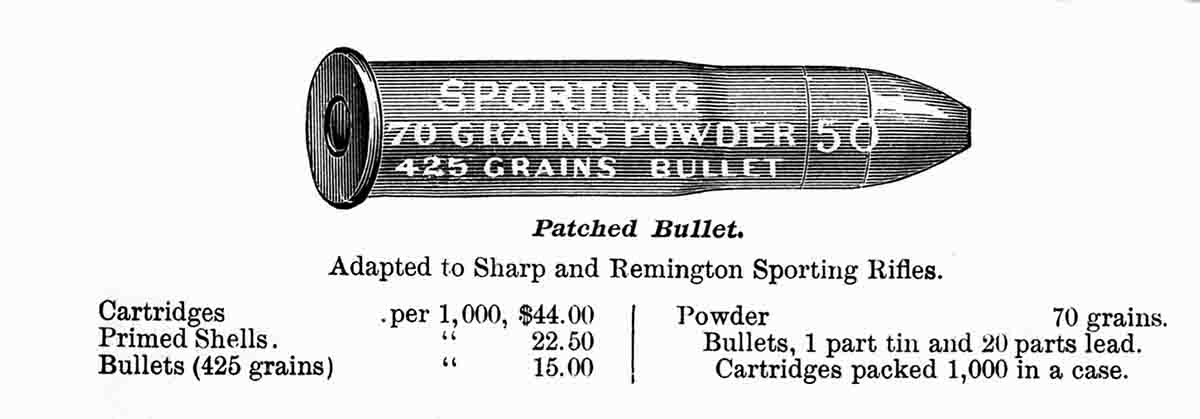
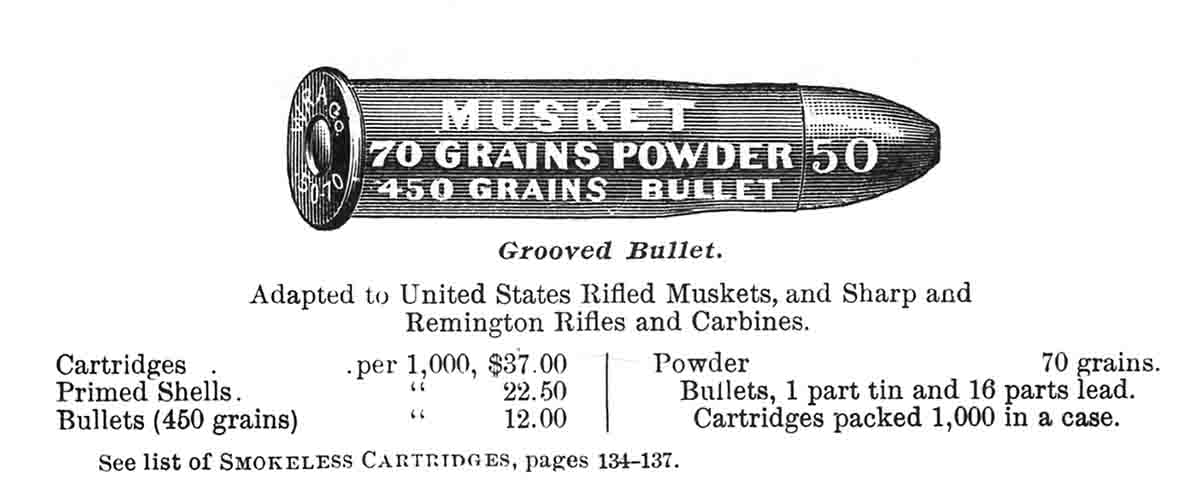
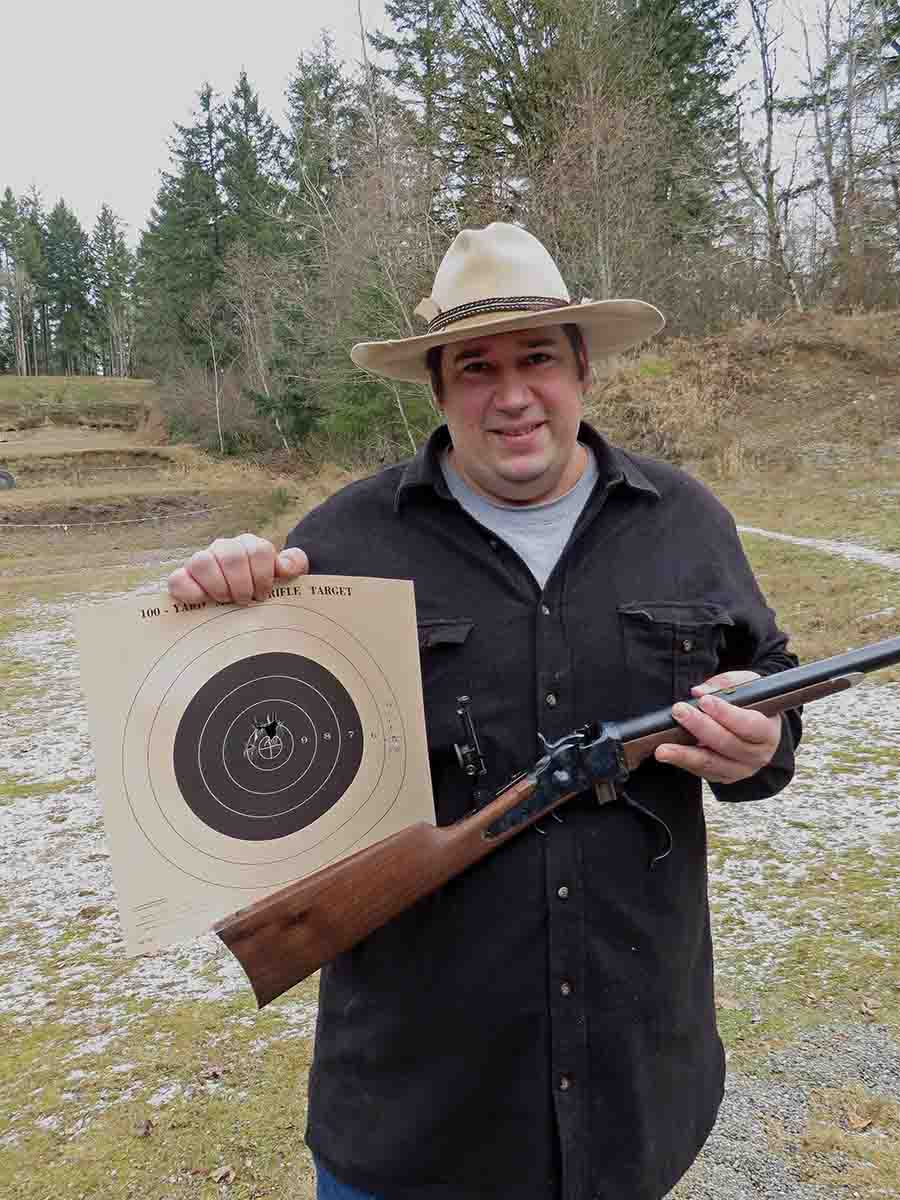
His ammunition shot okay, for starters. John was able to get his gun’s peep sight zeroed in fairly close as well as getting the set trigger adjusted to where he likes it. Yes, there is a break-in period for new barrels and John used this ammunition for that too, wiping or cleaning the barrel after every shot. Shooting those cartridges also gave John some fireformed brass to reload; for accurate black powder cartridge ammunition, fireformed brass is the best.
With the fireformed brass, shooters often don’t need to resize the cases, not if the loads are to be used in the same rifle. Instead you clean the cases (a standard step for all black powder reloading) and then bell the mouth of the cases just a little so they can easily receive the bullets. After priming the cases, put in the powder charge, compress it with the card wad and then seat the bullets with your fingers. The final step is to crimp the mouth of the cases on the bullets very lightly, just enough to hold the bullets in the cases.
That’s how John loaded his ammunition with fired brass and somewhere along the line he increased his powder charge to 65 grains (by volume). Increasing the powder charge added
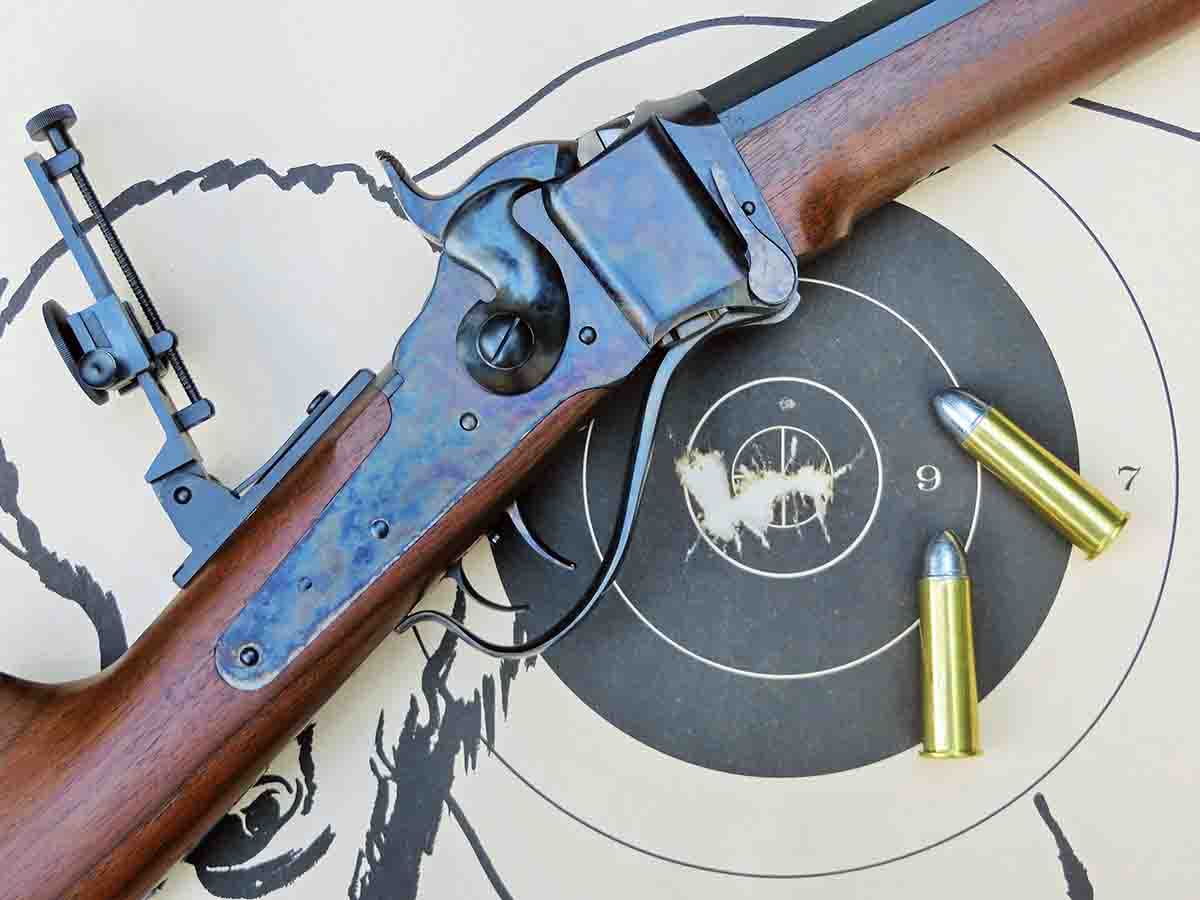
John was able to prove how well his new rifle was shooting at the very first BPCR match he entered. It was one of our Old West Centerfire Matches with targets at 100 and 200 yards, and the shooting is done while sitting behind cross-sticks. We were shooting side by side and he almost stole the show by taking 2nd place. Of course, I had to comment, “Not too bad, for a beginner!” John just grinned and he will certainly treasure the Ralph Heinz print (donated by C. Sharps Arms) that he picked as his shooting prize. Let me add that where he really pulled ahead of most other shooters (including me) was out at 200 yards.
This isn’t a story just about John and his rifle; the .50-70 is really a fine black powder rifle cartridge for someone just getting into BPCR shooting.
It has some excellent advantages because rifles using this cartridge are generally easy to handle, the recoil is not severe and the ammunition is not terribly temperamental to reload. Performance-wise, it will hold its own out to, and perhaps beyond, 600 yards. In addition to that, although there is no factory-loaded ammunition available, custom loads and all necessary components are easy to get. The same goes for loading tools and bullet moulds. In fact, it could be said that there is nothing really difficult about a .50-70.
Suppliers:
C. Sharps Arms, Inc.
PO Box 885, Big Timber MT 59011
(406) 932-4353
csharpsarms.com
Buffalo Arms Company
660 Vermeer Court, Sandpoint ID 83852
(208) 263-6953
buffaloarms.com
The Gun Works Oregon Trail Barrels
247 South 2nd Street, Springfield OR 97477
(541) 741-4118
thegunworks.com
Lyman Products Corporation
475 Smith Street, Middletown CT 06457
(800) 225-9626
lymanproducts.com
GOEX Olde Eynsford powder
6430 Vista Drive, Shawnee KS 66218
(913) 362-9455
goexpowder.com


